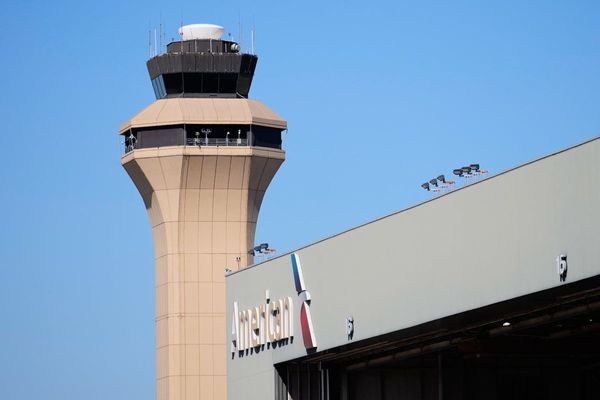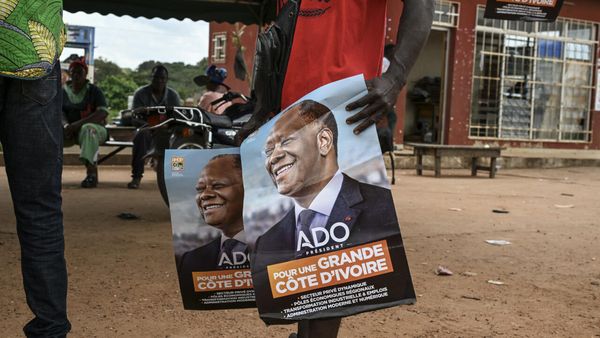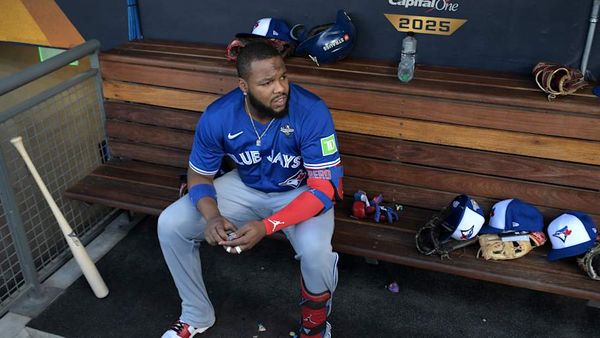
Measured by sheer speed and violence, the stunning crash of Silicon Valley Bank has left even those who've lived through decades of ups and downs in the market floored. On Wednesday, SVB was a 40-year old Valley institution, quietly banking (by some estimates) half of the Valley's startups. By Friday, it was done, shut down by California regulators. Now startups, VCs and analysts are piecing together how the bank run happened, why no one could stop it, and who is at risk next.
How did the Silicon Valley Bank run happen?
SVB Financial, parent company of embattled Silicon Valley Bank, shocked many when it announced plans March 8 to strengthen its financial position. SVB said it sold nearly all of a $21 billion securities portfolio at a loss of nearly $2 billion. SVB also said it was seeking to raise $2.25 billion, by offering $1.75 billion in a share sale. General Atlantic, a private equity firm, also agreed to buy $500 million in stock. Goldman Sachs served as underwriter on the $2.25 billion stock sale but not the securities portfolio transaction. The $2.25 billion stock sale ended up getting pulled, SVB said in a March 10 statement. Goldman and General Atlantic declined comment.
The attempted stock sales spooked the venture community, with several funds withdrawing their money from SVB. For example, Peter Thiel’s Founders Fund, Union Square Ventures and Coatue Management told their companies to pull their money from SVB to avoid getting caught up in a potential bank failure, CNBC reported. Investors and depositors ended up withdrawing $42 billion in deposits from the SVB, which caused the bank to end March 9 with a negative cash balance of about $958 million, according to a March 10 filing from the Commissioner of Financial Protection and Innovation. SVB stock plunged 60%, closing Thursday at $106.04. Founders Fund and Union Square did not return messages for comment. Coatue declined to comment. SVB did not return messages for comment.
On Friday, SVB was rumored to be seeking out a buyer. However, large banks were not expected to be interested in SVB due to its loan portfolio, which is heavily skewed toward VC. Venture or private equity funds made up about 56% of its global banking portfolio in 2022, per the company’s 2022 annual report, Fortune reported.
The California Department of Financial Protection and Innovation then shut SVB down on Friday, appointing the Federal Deposit Insurance Corp as receiver. The FDIC created the Deposit Insurance National Bank of Santa Clara, a temporary bank. As receiver, the FDIC will dispose of the SVB assets, according to a statement. The Nasdaq, which treats an FDIC receivership as the functional equivalent to a bankruptcy, halted SVB's stock on Friday.
SVB had $209 billion in assets as of Dec. 31, according to the FDIC. This means SVB is the biggest bank failure since 2008 when Washington Mutual collapsed with $307 billion in assets. JPMorgan ended up buying WaMu for $1.9 billion. SVB was still looking for a savior by Friday afternoon. A deal could involve selling the company’s assets piecemeal or as a whole, Bloomberg reported. The goal is to complete a deal by Monday, the story said.
Why didn't anyone step in to save Silicon Valley Bank?
Late Thursday and into Friday morning, there were rumblings that a white knight might step in to acquire SVB—making it a Merrill Lynch rather than a Lehman moment. At best, it looks like SVB could become another Washington Mutual. Several banks were expected to be interested in SVB. "SVB has a great balance sheet. Just a sh***y situation with a run,” one venture capital executive said. The best buyer is JPMorgan, one of the world’s biggest banks that has been buying up fintechs, according to three banking and VC executives. Other potential bidders included Citi and Wells Fargo, the people said. But a buyer as of Friday had yet to materialize. “Big banks will not touch [SVB]. Too much bad debt exposure to the VC world,” one of the bankers told Fortune.
It’s 2023. Don’t regulators have any way to stop bank runs?
While you might assume there’s an A.I. bot that can stop modern bank runs, some are arguing the opposite is true: Digital portals for withdrawals and social media to fuel the panic may have made things worse. During most previous bank runs depositors at least had to show up in person (or later call) to ask for their money back, somewhat stretching out the process.
And yes, there are lots of lots of laws governing banks along with 50 state agencies and several federal agencies. Then there's the FDIC, which was created in 1933 to insure deposits in U.S. banks and thrifts (up to $250,000 per account holder) in the event of bank failures. But the main way regulators try to prevent bank runs is before they happen. And plenty of questions will also be asked about the Dodd-Frank Wall Street Reform and Consumer Protection Act, a law that was passed after the 2008 financial crisis to prevent the excessive risk-taking that led to blowups like Lehman Brothers and Washington Mutual. Dodd-Frank was enacted to guard against an SVB-type blowup. But fault for this might lie with small banks themselves, who after Dodd-Frank went into effect, complained that the stricter regulations were excessively costly for them, according to a report from the Federal Reserve Bank of Philadelphia. In 2018, President Donald Trump signed a bill that raised the threshold for when companies qualify as a “systemically important financial institution” or SIFI, meaning the bank would be subject to annual stress testing and other regulatory requirements, to $250 billion in assets from $50 billion in assets. Greg Becker, SVB’s CEO, in 2015 urged the government to increase the threshold, arguing it would otherwise lead to higher costs for customers and “stifle our ability to provide credit to our clients,” Bloomberg reported. SVB had about $212 billion in total assets as of December 2022, up from $56.9 billion at the end of 2018, meaning it was exempt from the stricter regulations.
Then there’s the Basel Accords, an international regulatory framework, that was developed to make sure banks hold enough cash reserves to meet their financial obligations and survive in financial and economic distress, according to the Corporate Financial Institute. In September 2022, the Federal Reserve reaffirmed its commitment to Basel III standards, which required banks to hold considerably higher capitalization levels and wider liquidity buffers, a PwC report said. European banks were required to implement Basel III but only the largest U.S. banks were subject to full Basel NSFR requirements, the Financial Times said. SVB didn’t have to adhere to Basel III. The bank said in its most recent 10K filing: “Because we are a Category IV organization with less than $250 billion in average total consolidated assets, less than $50 billion in average weighted short-term wholesale funding and less than $75 billion in cross-jurisdictional activity, we currently are not subject to the Federal Reserve’s LCR or NSFR requirements, either on a full or reduced basis.”
Academic journals are rife with articles about how the system can better protect against bank runs. But generally the political conversation seems to toggle between ‘we need more regulation’ and ‘regulation is too costly and strangles competitiveness.’
What can Silicon Valley bank depositors get back?
Nearly all, or 89% of SVB’s liabilities are deposits, according to the Wall Street Journal. This is higher than some bigger banks, like Bank of America, where 69% of its liabilities are deposits. The lack of IPOs means SVB clients weren’t getting new funds from public offerings or fundraisings, the Wall Street Journal said. Total deposits dropped nearly 9% to $173.1 billion at the end of 2022, according to the SVB annual report.
The FDIC said Friday that all insured depositors will have full access to their insured deposits no later than the morning of Monday, March 13. However, most of SVB’s deposits are uninsured. (According to SVB’s 2022 annual report, the bank reported $173.1 billion in total deposits as of Dec. 31. About $151.5 billion, or 88% of total deposits, was uninsured.) FDIC said it would pay uninsured depositors an advance dividend within the next week. They will also receive a receivership certificate for the remaining amount of their uninsured funds. Uninsured depositors may also get future dividend payments as the FDIC sells off SVB assets, the statement said.
Who else is at risk?
Just like during the Financial Crisis in 2008, there's a sense that there will be plenty more shoes to drop as the contagion from SVB spreads.
SVB’s collapse impacted other banks Friday, while many larger institutions, whose deposits are more diversified, remained unscathed. Shares of First Republic Bank, a bank and wealth company with $212.6 billion in total bank assets as of Dec. 31, fell nearly 15% Friday, while Western Alliance Bancorp, a regional bank holding company with more than $65 billion in assets, plunged 21%. Both banks attempted to calm investors Friday, saying their liquidity and deposits remained strong. In contrast, shares of JPMorgan rose more than 3% to close at $133.65, while Bank of America shed 27 cents to $30.27 and Wells Fargo added 23 cents to end at $41.36 Friday.
One consequence of the SVB implosion is its impact on startups that have their assets, or deposits, with the bank, according to Dan Dolev, a senior analyst in fintech equity research at Mizuho Securities USA. “We don’t know what the exposure is of some of the startups,” Dolev said. Etsy, Roku, and Roblox are just a few of the companies that have already warned of exposure to SVB.
But as we'll see in the coming days and weeks, they certainly won't be the last.







